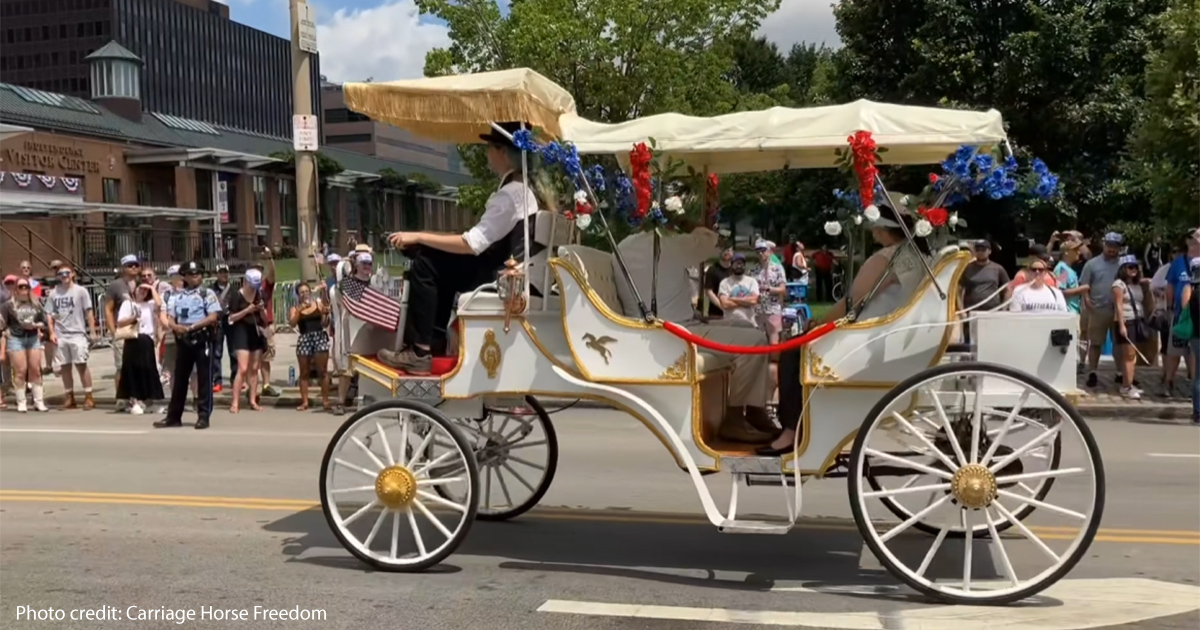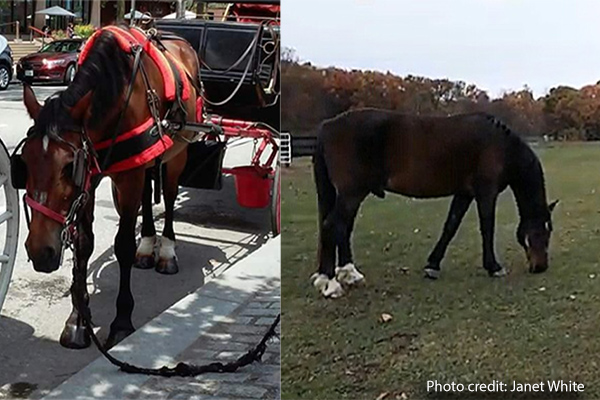
Nov 02, 2023 From Horse-Drawn to Electric Carriages: Promoting a Paradigm Change
Crowded 21st-century city streets carrying high-speed traffic are inappropriate places for horses. This seems obvious, but 2,000-pound horses may still be observed weaving through heavy traffic daily in cities across the US and worldwide, to the peril of themselves and all the pedestrians, motorists, and cyclists surrounding them.
Horse-drawn carriages were historically the prime mover of people and goods. There was no other option until the internal combustion engine became popularized a century ago, and horse-drawn carriages were replaced by automobiles (originally called “horseless carriages”) and trucks. Their replacement was driven by new technology and evolving cultural values emphasizing efficiency, sanitation, safety, and animal welfare.
After 50 years of virtually horse-less streets, horse-drawn carriages were reintroduced in Philadelphia during the U.S. Bicentennial in 1976 as a tourist attraction. This form of entertainment appealed to some tourists, families, and romantics but was controversial and has fallen out of favor in recent years.
The animal welfare problems caused by horse-drawn carriages are serious. Carriage horses experience respiratory impairment resulting from the horses constantly working nose-to-tailpipe, lameness due to the horses’ excessive pounding on paved city surfaces, and heat prostration during extreme temperatures. The Humane Society Veterinary Medical Association provides data to validate these claims and reaches out to city governments urging bans on horse-drawn carriages.

Mark the horse (left) as a former Philadelphia carriage horse and (right) home in his new sanctuary. See note (1) below.
Horse-drawn carriages also threaten public safety. Pedestrians, cyclists, and motorists must share the roads with horses with highly developed flight drives that may be triggered when horses are startled by an unexpected or threatening stimulus, prompting them to bolt immediately and sometimes resulting in serious accidents.
As bans on horse-drawn carriages continue to be enacted in cities worldwide — including Chicago, Salt Lake City, Montreal, Mumbai, and Amsterdam — electric horseless carriages (e-carriages) are increasingly taking their place. Similar in appearance to 19th-century horse carriages, e-carriages are battery-powered and offer riders both a historical experience and a cruelty-free activity. This year, an electric carriage debuted in Philadelphia, distinguishing it as the first major US city to introduce an e-carriage. This carriage, presented by animal advocacy group Carriage Horse Freedom, was named “Caroline” in honor of 19th-century Philadelphia animal advocate Caroline Earle White and will be used for city tours and private events.
The Ban/Replace model is the wave of the future – animal advocates in Philadelphia, New York City, and other major cities are promoting legislative bans on horse-drawn carriages and their replacement with electric carriages. Such legislation was introduced in New York City last year but is stalled due to political pressure from the labor union representing the horse carriage industry there. In contrast, Philadelphia has no union and only one horse-drawn carriage company, the 76 Carriage Company. The company no longer operates its carriages after its stable was closed due to its sale to a real estate developer. The 76 Carriage Company is part of a larger company, Philadelphia Trolley Works, which operates most of Philadelphia’s tourist transportation. Since the cessation of the horse-drawn carriage rides, the company has introduced electric car tours, with some of their carriage drivers operating these vehicles.
A ban on horse-drawn carriages in Philadelphia and other cities will require political will. Many animal advocacy groups, including Carriage Horse Freedom, and other concerned citizens have encouraged Philadelphia City Councilmembers to introduce legislation to ban this practice. There must be an assurance that carriage horses displaced by the new electric carriages have sanctuary homes available. Ultimately, because horses are considered the property of the carriage companies, these companies will decide the dispersal of their horses. Still, Carriage Horse Freedom and other advocates continue building a database of sanctuaries prepared to adopt retired carriage horses.
Janet White is the founder and director of Carriage Horse Freedom, a solution-oriented animal advocacy organization working to ensure a legislative ban on horse-drawn carriages in Philadelphia, and CEO of FREe-CARRIAGES, LLC, a startup enterprise offering electric carriages as a cruelty-free and eco-friendly alternative.
(1) Regarding Mark, the former Philadelphia carriage horse, pictured above, Susan Wagner, president of Equine Advocates Sanctuary, where Mark now lives, describes his condition: “Mark… sustained the types of injuries common to working horses. He has marked navicular bone degeneration – cysts, bone spurs sclerosis, marked pedal osteitis — inflammation and lysis, coffin joint arthritis, deep digital flexor tendon mineralization and fetlock arthritis. Mark’s problems are degenerative and can only be managed with daily pain medication. Despite his soundness issues, Mark is an extremely stoic horse who does not give in to his problems and has a real zest for life.”


